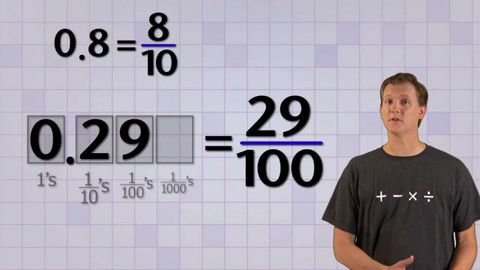
Subtitles & vocabulary
Math Antics - Converting Base-10 Fractions
00
Yassion Liu posted on 2016/07/21Save
Video vocabulary
make
US /mek/
・
UK /meɪk/
- Transitive Verb
- To arrange or prepare something e.g. dinner
- To get to (a place) on time
- Noun
- Product made by a particular company; brand
A1
More know
US /noʊ/
・
UK /nəʊ/
- Verb (Transitive/Intransitive)
- To be familiar with a person or place, thing
- To feel sure or be convinced about something
A1TOEIC
More time
US /taɪm/
・
UK /taɪm/
- Uncountable Noun
- Speed at which music is played; tempo
- Point as shown on a clock, e.g. 3 p.m
- Transitive Verb
- To check speed at which music is performed
- To choose a specific moment to do something
A1TOEIC
More sense
US /sɛns/
・
UK /sens/
- Noun (Countable/Uncountable)
- Certain mental feeling or emotion
- Normal or clear state of mind
- Verb (Transitive/Intransitive)
- To perceive using sight, sound, taste touch etc.
- To recognize the presence of something
A1TOEIC
More Use Energy
Unlock All Vocabulary
Unlock pronunciation, explanations, and filters
